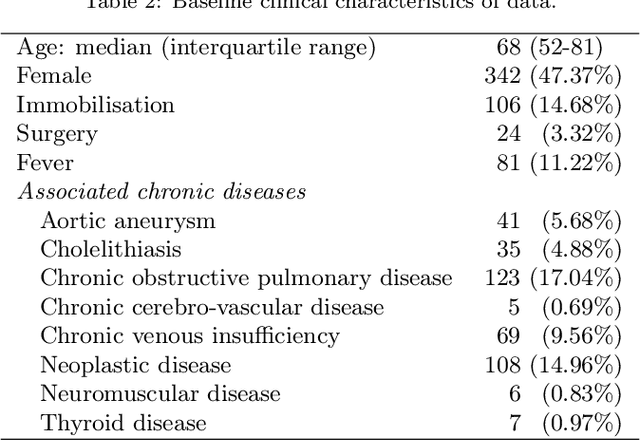Davide Luciani
Causal Graph Aided Causal Discovery in an Observational Aneurysmal Subarachnoid Hemorrhage Study
Aug 12, 2024Abstract:Causal inference methods for observational data are increasingly recognized as a valuable complement to randomized clinical trials (RCTs). They can, under strong assumptions, emulate RCTs or help refine their focus. Our approach to causal inference uses causal directed acyclic graphs (DAGs). We are motivated by a concern that many observational studies in medicine begin without a clear definition of their objectives, without awareness of the scientific potential, and without tools to identify the necessary in itinere adjustments. We present and illustrate methods that provide "midway insights" during study's course, identify meaningful causal questions within the study's reach and point to the necessary data base enhancements for these questions to be meaningfully tackled. The method hinges on concepts of identification and positivity. Concepts are illustrated through an analysis of data generated by patients with aneurysmal Subarachnoid Hemorrhage (aSAH) halfway through a study, focusing in particular on the consequences of external ventricular drain (EVD) in strata of the aSAH population. In addition, we propose a method for multicenter studies, to monitor the impact of changes in practice at an individual center's level, by leveraging principles of instrumental variable (IV) inference.
A probabilistic network for the diagnosis of acute cardiopulmonary diseases
May 12, 2018



Abstract:In this paper, the development of a probabilistic network for the diagnosis of acute cardiopulmonary diseases is presented. This paper is a draft version of the article published after peer review in 2018 (https://doi.org/10.1002/bimj.201600206). A panel of expert physicians collaborated to specify the qualitative part, that is a directed acyclic graph defining a factorization of the joint probability distribution of domain variables. The quantitative part, that is the set of all conditional probability distributions defined by each factor, was estimated in the Bayesian paradigm: we applied a special formal representation, characterized by a low number of parameters and a parameterization intelligible for physicians, elicited the joint prior distribution of parameters from medical experts, and updated it by conditioning on a dataset of hospital patient records using Markov Chain Monte Carlo simulation. Refinement was cyclically performed until the probabilistic network provided satisfactory Concordance Index values for a selection of acute diseases and reasonable inference on six fictitious patient cases. The probabilistic network can be employed to perform medical diagnosis on a total of 63 diseases (38 acute and 25 chronic) on the basis of up to 167 patient findings.
* The DOI of the article published after peer review was added. A technical detail was added in Section 3.2, Formula 8 (as a consequence, the ID of all the subsequent formulas result augmented by 1 with respect to the previous version). The prior standard deviation of the Gamma distribution in Table 4 was fixed (in the previous version, the prior variance was indicated, instead)
 Add to Chrome
Add to Chrome Add to Firefox
Add to Firefox Add to Edge
Add to Edge